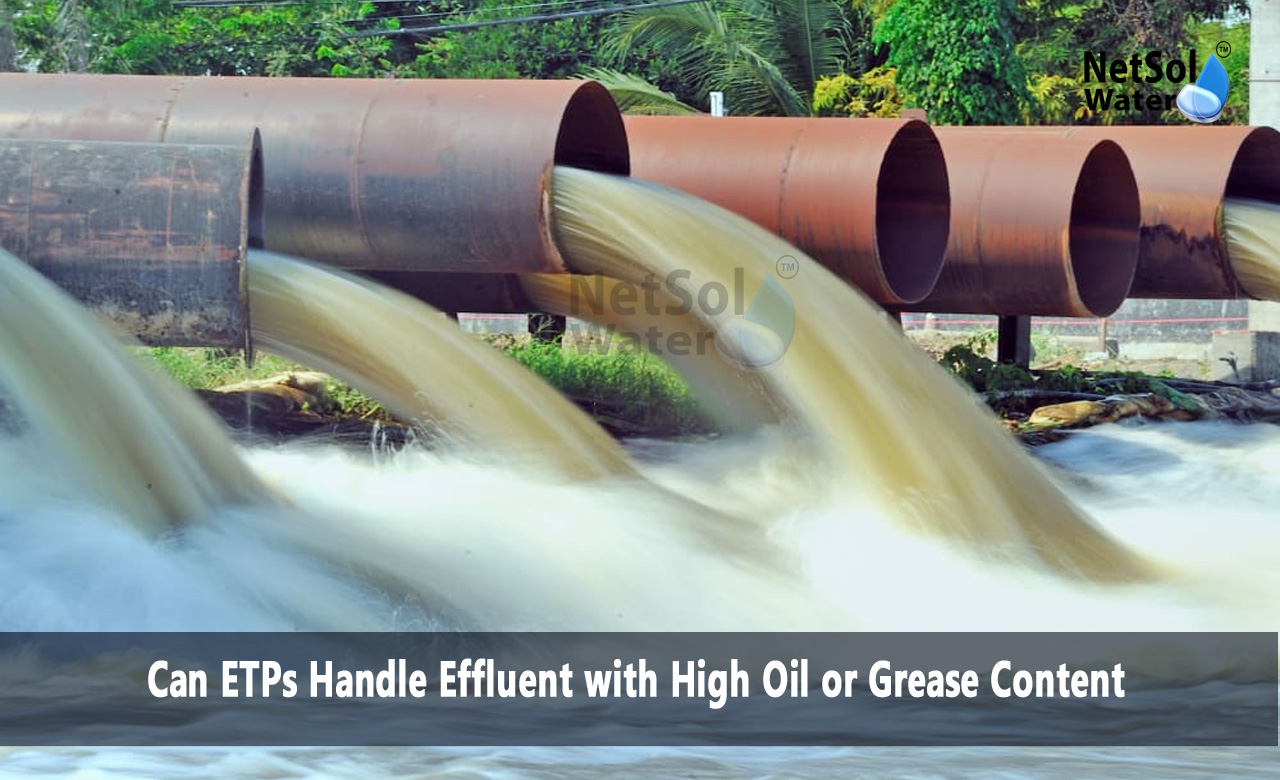Can ETPs Handle Effluent with High Oil or Grease Content?
An effluent treatment plant must handle water that carries oil or grease. This matter can change how the system works. Netsol Water leads the way in manufacturing systems that face this challenge. The plant must remove oil before it harms machines and water bodies. This task grows harder when oil levels rise. High oil can block filters and harm microbes. Netsol Water meets this need with smart design and strong support.
A clear plan keeps the system running. It also keeps the treated water safe for release or reuse. Netsol Water guides each step with care. They use proven designs and friendly support teams. Their plants work without frequent breakdowns. They also keep the treated water clean. This balance matters for factories and local rules.
We Will look at the key parts of handling oily effluent. We learn how each stage helps the whole plant.
Challenges of High Oil or Grease Content
Oil can harm each part of the treatment system. It can block pipes and slow down flow. It can also coat equipment and cut its life span. This makes fixing easier later more costly.Let us have a look at some common issues and how they arise
Blockage in Screens and Filters
Oil sticks to filter surfaces. This layer slows water flow. It forces more cleaning and adds downtime.
Harm to Biological Processes
Grease can coat helpful microbes. This layer stops microbes from breaking waste. The system then fails to meet quality goals.
Sludge Handling Stress
Oil can mix into the sludge. This mix makes sludge heavier. It loads the digester and adds cost to dispose the sludge.
These issues show why high oil needs special care. The next step is to use the right pretreatment methods.
Pretreatment Options
Pretreatment prepares the water for main cleaning. It cuts down oil levels early. This step keeps the rest of the plant safe. It also cuts cost by stopping full system clogs.Let us have a look at some methods that work well
Gravity Separation Tanks
Water flows slowly in these tanks. Oil then floats up. Operators can skim it off the surface.
Dissolved Air Flotation
This step adds tiny bubbles to the water. Oil clings to the bubbles and floats. The float layer slides off the system.
Coalescers and Media Filters
These filters have layers of material. They force oil droplets to join. That makes droplets bigger. The system then pulls the bigger drops out.These methods link well in a sequence. Each step makes the next more effective.
Biological Treatment Approaches
Biological steps break down organic matter. They also work on light oil traces. Good microbes feed on the waste. They turn it into harmless gases and water.Let us have a look at some ways to boost this process
Aerobic Reactors
These units add air to feed microbes. The air makes microbes active and quick. They then break down oil traces in the water.
Anaerobic Reactors
These units work without air. They host different microbes. They turn waste into methane and biomass.
Biofilm Reactors
These units use surfaces for microbes to cling on. The clings help form strong microbe layers. Those layers digest oil traces well.Each bio step links to the pretreatment stage. This link ensures the plant can meet clean water goals.
Physical and Chemical Separation Methods
Some times the plant needs chemical help. This help cuts oil into small drops or makes oil settle faster. It helps pull oil out more fast.Let us have a look at some lab and tank methods that fit well
Chemical Coagulation
This step adds safe chemicals. They make oil droplets gather. These clumps then sink or float. Operators remove those clumps.
Flocculation
Here the plant adds material that makes clumps bigger. The bigger pieces move out of the water with ease.
Media Adsorption
This step uses solid bits that trap oil. The bits then go through cleaning or swap out.These methods link with the earlier steps. Each layer of cleaning makes the final water very clean.
Monitoring and Maintenance
A strong plant needs checks each day. It also needs planned maintenance. This care keeps each part in top shape.Let us have a look at some key actions to keep the system safe
Regular Flow Checks
Operators measure flow and pressure in each part. They find blockages before they grow.
Oil Layer Measurement
Teams watch oil levels in tanks and filters. They then set the right cleaning time.
Equipment Inspection
Teams look at pumps and sensors. They spot wear early. This spot leads to quick fixes.
Each check links to the next. This link keeps the whole plant safe. Netsol Water adds smart tools to help with these tasks.
Conclusion
An effluent treatment plant must meet high oil loads with clear stages. Pretreatment and bio steps and checks all join to form a strong flow. Netsol Water leads in each step and design each plant to keep oil away from key parts.
If you need a system that can meet your oily waste needs reach out to Netsol Water. Our team stands ready to share more details or plan a consultation. Contact us today to learn how an effluent treatment plant by Netsol Water can work for you.
Contact Netsol Water at:
Phone: +91-9650608473, Email: enquiry@netsolwater.com



